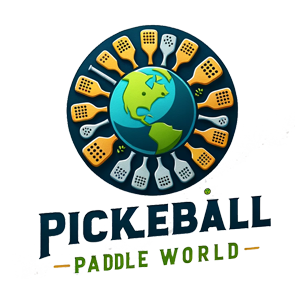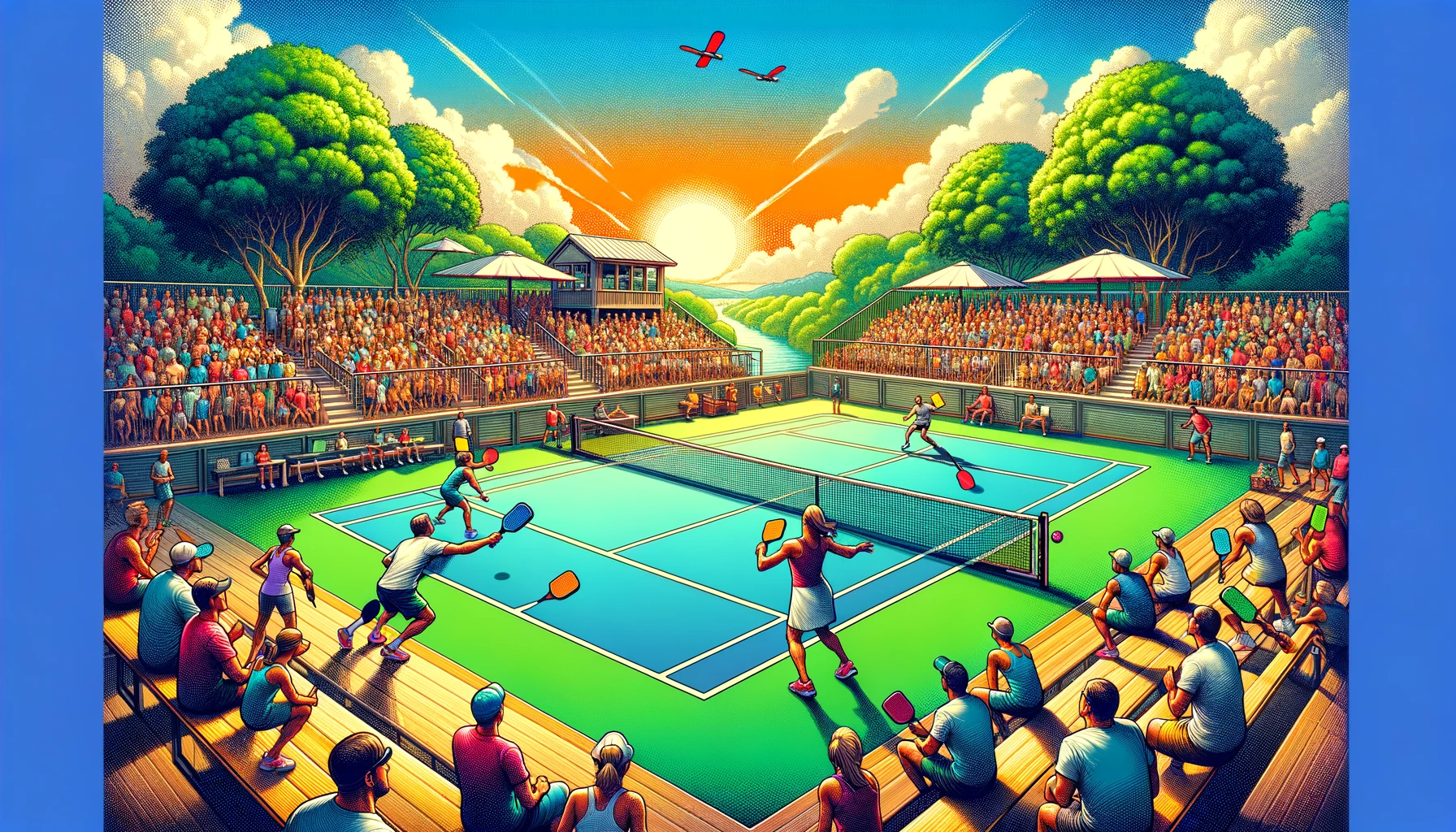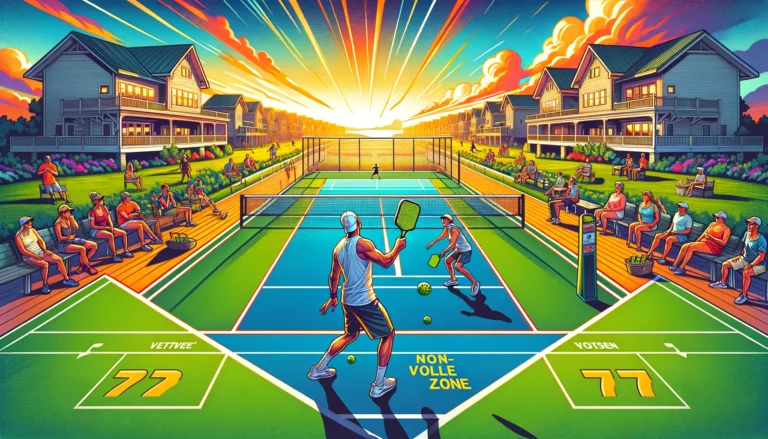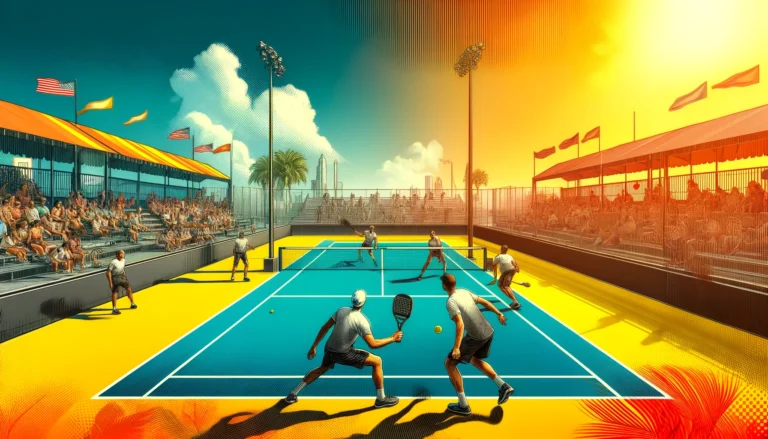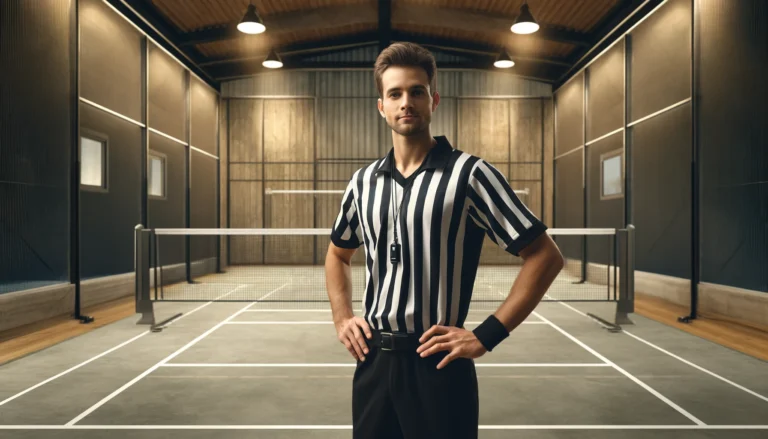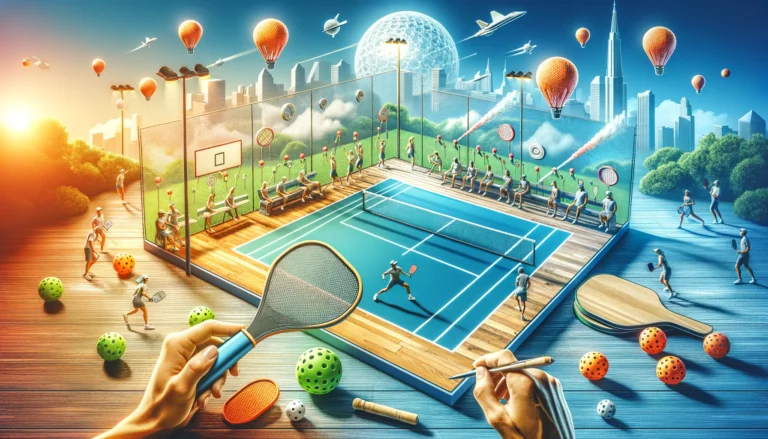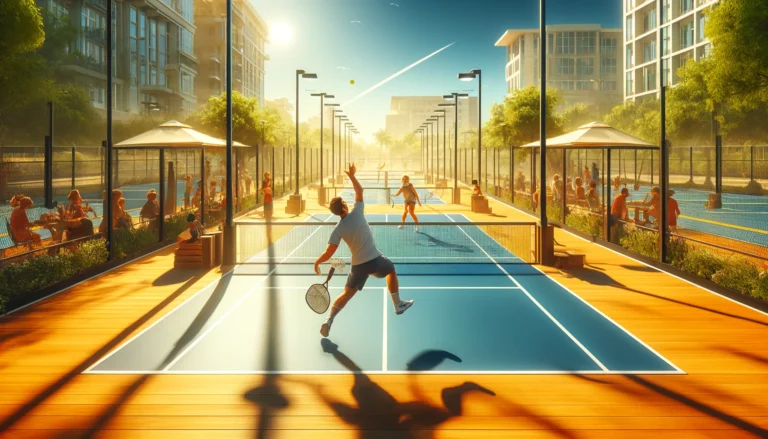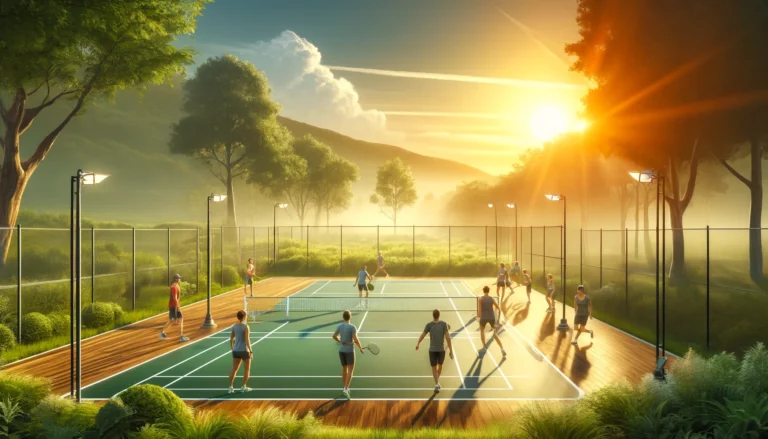Exploring 3 Person Pickleball: A Comprehensive Guide to Enjoying the Game with Friends
Pickleball, a sport that combines elements of tennis, badminton, and table tennis, has rapidly gained popularity across various age groups. Recently, a new variant called “3 person pickleball” is making waves among enthusiasts looking for a dynamic and slightly unconventional way to enjoy the game. This guide dives into the essentials of playing pickleball with three players, ensuring everyone from beginners to seasoned players can join in the fun.
As we explore the nuances of 3 person pickleball, we’ll delve into the specific rules that differentiate it from traditional doubles play, along with strategies to maximize your game. This article will cover everything from basic gameplay to advanced tips for competitive play.
By the end of this post, you will not only understand the fundamental rules and gameplay strategies specific to 3 person pickleball but also appreciate how this variant can enhance your social interactions and physical fitness. Whether you’re looking to mix up your game or find a new way to engage with friends on the court, this guide has something for everyone.
3 Person Pickleball
3 person pickleball is a creative twist on the traditional game, designed to include an additional player in what is typically a four-player game. This format requires slight modifications to the standard rules to accommodate the odd number of players, ensuring that the game remains competitive and enjoyable. The key is to rotate positions effectively, allowing each player to participate actively in the game. This section will detail the setup, positioning, and rotation strategies that are essential for a smooth 3-person game.
3 Person Pickleball: A Guide to Playing with an Odd Number of Players
Pickleball, traditionally played with four players, can be just as engaging and competitive with three players by making some modifications to the standard rules. Here’s how you can set up and play a 3-person pickleball game that keeps all players active and involved:
Game Setup
- Court Setup: Use a standard pickleball court. The dimensions and net height remain unchanged.
- Equipment: Standard pickleball paddles and balls are used.
Positioning and Rotation
- Starting Positions: One player starts at one end of the court, while the other two players share the opposite end. The single player serves to start the game.
- Rotation Strategy: Players rotate positions after each point to ensure everyone plays from both ends of the court and both sides of the net. The rotation can be clockwise or counterclockwise, as agreed upon before the game begins.
Modified Rules for 3 Players
- Serving: The server continues to serve until they commit a fault. After a fault, the serve rotates to the next player.
- Scoring: Standard scoring rules apply, but keeping track of who serves next can be simplified by having players serve in a consistent sequence throughout the game.
- Play: All standard rules of pickleball apply, including the two-bounce rule and no-volley zone rules.
By rotating positions and adapting the serving order, 3-person pickleball becomes a dynamic and inclusive game that challenges each player’s skills while ensuring everyone has an equal opportunity to play. This format not only accommodates an odd number of players but also adds a unique strategic element to the game.
Pickleball Rules
Understanding the rules of pickleball is crucial for any player, and the modifications for 3 person play are no exception. This segment covers everything from serving and scoring to specific rule adaptations for three players. For instance, the serve rotation and fault rules need adjustment to keep the game fair and flowing. We’ll explore these changes in depth, along with standard pickleball rules that remain the same, providing a comprehensive understanding of the game’s framework.
Understanding Pickleball Rules: Standard and Modified for 3-Person Play
Pickleball rules are designed to ensure fair play and enjoyment for all participants. When adapting the game for three players, certain rules are modified, while others remain unchanged. Here’s a comprehensive overview of the standard pickleball rules along with specific adaptations for 3 person play:
Standard Pickleball Rules
- Court Size: The court measures 20 x 44 feet, divided into two service areas and a non-volley zone (the “kitchen”) that extends 7 feet from the net on both sides.
- Equipment: Players use a paddle and a plastic ball with holes.
- Serving: The serve must be made underhand with the paddle below the waist. The ball is served diagonally, starting with the right-hand service square and alternating each serve.
- Scoring: Points are scored only by the serving side and games are typically played to 11, 15, or 21 points, with a win requiring a 2-point lead.
- Faults: Faults occur for various reasons such as hitting the ball out of bounds, not clearing the net, stepping into the non-volley zone and volleying the ball, or volleying before the ball has bounced once on each side.
Modifications for 3-Person Play
- Serve Rotation: The serve rotation must be adapted for three players. The player at one end serves to the team of two at the opposite end. After a point is scored or lost, players rotate positions to ensure each player serves against both opponents.
- Fault Rules: With three players, maintaining a clear rotation and fault system is essential to keep the game balanced. When the server commits a fault, the serve passes to the next player in the rotation sequence, which might be on the same team if playing in a 2-versus-1 format.
- Positioning and Play: To accommodate three players, the positioning during the serve can be adjusted so that the team of two uses only one service box each turn, alternating which player receives the serve. This rotation continues throughout the game to maintain fairness.
These adaptations are designed to maintain the spirit and competitive nature of pickleball while accommodating an odd number of players. By understanding both the standard and modified rules, players can enjoy a seamless game experience regardless of the number of participants.
How to Play Pickleball
Transitioning from the basics to more advanced techniques, this part of the guide emphasizes strategies that are particularly effective in 3 person pickleball. We’ll discuss how to leverage the unique dynamics of having three players, such as forming temporary alliances and understanding spatial dynamics on the court. Additionally, this section will offer tips on improving personal skills like shot accuracy, stamina, and strategic play.
Advanced Strategies for 3-Person Pickleball
Once you have mastered the basic rules of pickleball, incorporating advanced techniques can significantly enhance your gameplay, especially in a 3-person format. This setup offers unique dynamics and opportunities for strategic play. Here are some strategies and tips to elevate your game:
Leveraging Temporary Alliances
- Rotating Alliances: In a 3 person game, two players are often on one side of the net against a single opponent. These dynamics can shift quickly, creating temporary alliances where two players may subtly cooperate to challenge the third. Recognize these shifts and adjust your strategy to either form an alliance or disrupt one.
- Strategic Targeting: When you’re part of the duo, you might target the solo player with deep shots or sharp angles to exploit the extra space they must cover. Conversely, if you’re playing solo, aim to disrupt the duo’s rhythm by varying shot placement and pace.
Understanding Spatial Dynamics
- Court Coverage: With three players, understanding and exploiting the court’s spatial dynamics becomes crucial. When you’re in the duo, divide the court efficiently to cover more ground. As the solo player, use your mobility to cover the court and make use of open spaces.
- Positional Play: Position yourself strategically based on your opponents’ locations and tendencies. Anticipate where the ball is likely to go next and move accordingly.
Improving Personal Skills
- Shot Accuracy: Practice precision in your shots to make it difficult for opponents to return the ball. Aim for the corners and boundaries of the service boxes to stretch your opponents’ reach.
- Stamina: 3 person pickleball often requires more movement, especially for the solo player. Increase your stamina through cardiovascular exercises so you can maintain a high level of play throughout the game.
- Strategic Play: Develop a game plan that plays to your strengths and exploits your opponents’ weaknesses. Whether it’s powerful serves, sneaky drop shots, or consistent backhands, use your best skills to gain an advantage.
Practice Drills
- Drills for Accuracy: Set up targets on the court to practice hitting specific locations. This can help improve your accuracy and ability to place the ball where you want it.
- Stamina Building Drills: Engage in drills that mimic the fast-paced and varied movement of a game, such as lateral moves, sprints to the net, and quick backpedals.
- Strategic Drills: Play out scenarios where you alternate between the solo and duo positions. This will help you adapt to changing dynamics and understand both offensive and defensive strategies from different positions.
By focusing on these advanced strategies and improving your personal skills, you can become a more formidable player in 3 person pickleball, making the game more enjoyable and competitive.
Playing Pickleball
Finally, to truly enjoy pickleball, one must dive into the playful and social aspects of the game. This section celebrates the communal and fun nature of pickleball, offering advice on organizing games, joining local leagues, and participating in community events. Whether you’re playing for fitness or competition, the joy of the game is always at the forefront in pickleball circles.
Conclusion
3 person pickleball offers a refreshing variation to the traditional game, bringing new challenges and opportunities for enjoyment. Throughout this guide, we’ve covered the essential rules, playing techniques, and social benefits of engaging in this sport with an extra player. Whether you’re a beginner or a seasoned player, the insights provided here should empower you to step onto the court with confidence and a new perspective.
As you continue your pickleball journey, remember to share your experiences and encourage others to try out this engaging sport. Join the conversation below, share your thoughts, and don’t hesitate to reach out for more information or to connect with fellow players. Let’s keep the spirit of pickleball alive and thriving!
